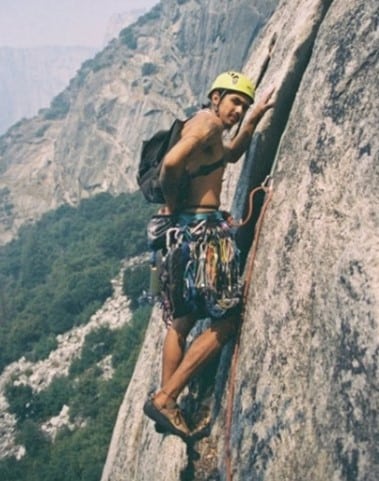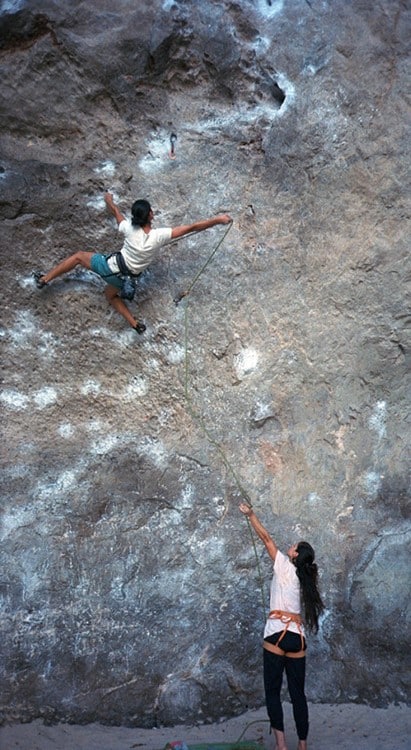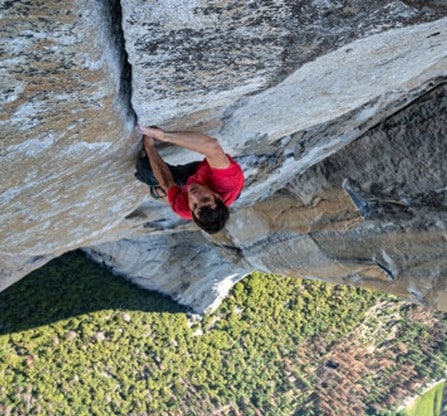Climbing Terminology: More Basic Terms
Climbing is a unique sport and has created its own strange and wonderful vocabulary. Whether you are an experienced climber or just beginning, understanding what others are saying is important. Here are more terms that will have you sounding more like a “rock jock” in no time.

1. Traditional or “Trad” Climbing
Traditional or “trad” climbing is a type of outdoor lead climbing where climbers must place removable protection, anchors, or gear as they climb. This protection is non-permanent, and the climber relies on pockets, cracks, and other rock features to secure the gear so it will hold if it is weighted or the climber falls. The climber clips their rope into the gear to protect against a fall as they ascend and removes it when they are finished climbing or when the second (or last) climber reaches it and is relying on protection, an anchor, or gear that was placed higher up by the lead climber.
2. Sport Lead Climbing or Sport Climbing
Sport lead or sport climbing is a type of lead climbing, both indoor and outdoor, where the bolts or anchors are already placed on the climb. The climber will place quickdraws in the pre-placed bolts or bolt holders that are fixed to the rock wall as they climb. Once the climber places a quickdraw, then they clip the rope into that anchor as they continue to climb. Indoor climbing facilities usually have the quickdraws permanently attached and the climber merely has to clip the rope into them as they climb.
3. Free Climbing
Don’t call “free-soloing” free climbing. They are different. This is one of the most common mistakes made by new climbers. Kind of like the old, all squares are rectangles but not all rectangles are squares colloquialism, free-soloing is free climbing, but free climbing is not always free-soloing. Free climbing simply refers to any style of climbing where you strictly use your strength and skill to ascend a route (no tools, like ascenders, skyhooks, ladders, or aiders). As long as you are only using hand and footholds on the climbing surface to get up a climb, you are free climbing. Free-soloing is just free climbing without a rope or partner, which is where the “soloing” comes in.

4. Free Soloing
No partner, no rope, and no gear equals the highest stakes in climbing. To free solo is to climb a route alone, without using any protective equipment—yes, just like Alex Honnold did on El Cap in the movie of the same name. It is a fairly uncommon type of climbing due to its extremely dangerous nature, those who do attempt free solos often choose easier routes and rehearse many times before soloing harder grades. Deep Water Soloing is a less dangerous and more common type of solo climbing. Deep water solo-ers climb without a rope on overhanging rock faces above deep water. If the climber falls, the idea is that they fall unharmed into water, although rough seas or hazards just below the surface can still pose risks.

5. Adaptive Climbing
Climbers with permanent physical disabilities may be considered adaptive climbers. Adaptive climbing can look different depending on the individual and the ways they need/prefer to adapt their climbing technique to work with their body. In some cases, an adaptive climber may use a chair harness and an ascender to scale walls.
6. Crux
The crux refers to the most difficult move or series of moves on a climb. Climbs are rated based on the crux, not on their average difficulty. You might cruise easily up half a climb but find yourself unable to make it past the crux move. While the moves in gyms are usually fairly consistent with their ratings, top to bottom, when climbing outdoors the difficulty can vary greatly. You might be climbing 100 feet of 5.9 or 90 feet of 5.7 with about 10 feet of 5.9. This is why reading guidebooks and researching routes is so important in climbing. It is best to know before you go!
7. Beta
This is one of the most useful terms for beginners to learn. Beta is any help, advice, or information from another climber in regard to a climb. Are you stuck on a move? Request beta from a more experienced climber and it will often help get you past it. Be careful when giving beta however, because it isn’t usually wanted unless it is asked for!
8. Flash
To flash a climb is completing a first attempt of a climb with no falls (or resting on the rope). However, a climber can usually get help or beta either in the form of observing another climber or receiving instructions with regard to moves or technique.
9. Gumby
This is a semi-derogatory term for a novice or new climber. Its origin as a climbing term is unknown. Although, it is likely inspired by the 1950s era Claymation character of the same name whose arms and legs were flexible, but whose motions were stiff and clumsy. Therefore, Gumby became a pejorative term for inexperienced, somewhat bumbling, or awkward climbers. Also, called a newbie or noob. (Look for a future blog article on Sure Signs You Are a Gumby)
10. Naturals
Indoor climbing walls or artificial climbing surfaces sometimes have “natural features” such as indentations, protrusions, cracks, corners, etc. in addition to artificial handholds that are screwed or bolted onto the surface. The built-in features are called naturals or “nats” and when a route is created, or “set,” they may be declared “on” or “off.” If the naturals are “on,” then climbers can use the “naturals” as they ascend. If the naturals are “off,” then the climber is supposed to avoid those features.
There are more terms to learn. So, stay tuned…
Climbing is dangerous, it involves inherent and other risks and cannot be eliminated. The information presented here does not describe all of the risks associated with climbing and is not intended to replace or supersede expert instruction and training.
© 2023 Vertical Endeavors, Inc. All rights reserved. The contents of this article, photographs, and graphical representations are protected by U.S. and International copyright laws. Reproduction and distribution, in part or whole, without written permission from Vertical Endeavors are prohibited.

